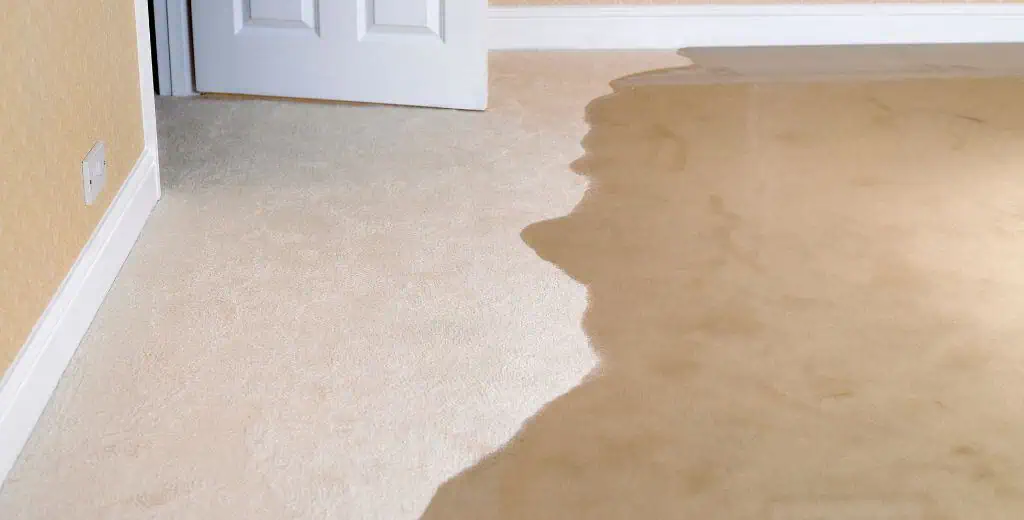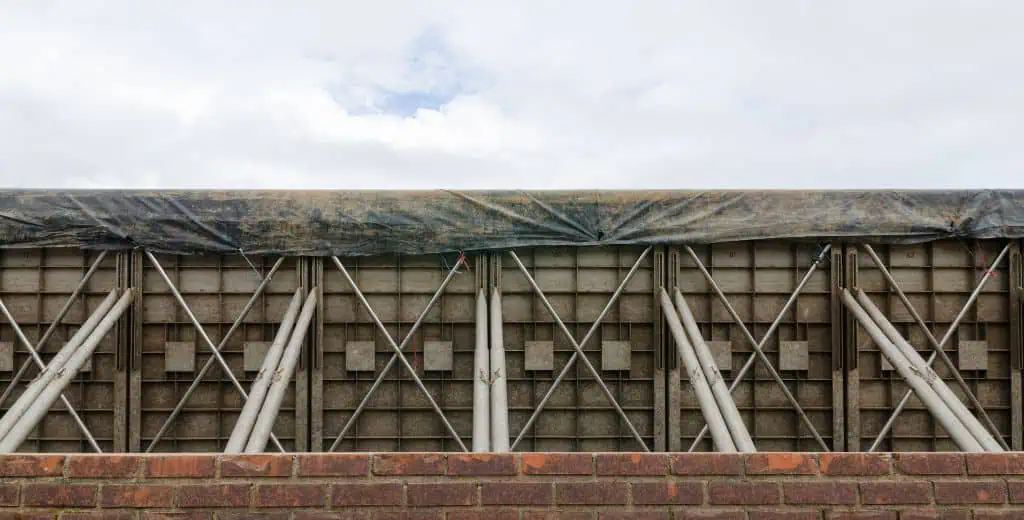What Is Flood Insurance?
Shortcuts: Flood Insurance
- Flood insurance covers flood damage from external water sources, which are usually not included in standard property insurance.
- Federal law requires flood insurance for high-risk properties with government-backed mortgages.
- The National Flood Insurance Program and private carriers offer different coverage levels and terms, with many homeowners combining both for better protection.
- FEMA has revised its flood insurance rates in 2021 using the Risk Rating 2.0 scheme.
- Flood risk impacts real estate transactions and property values—properties at a higher level sell for higher, but those in flood zones sell for less.
Understanding Flood Insurance
Flood damage can devastate a property, but unfortunately, standard property insurance policies usually do not cover it. Repair costs increase quickly when floods strike, not just in high-risk zones. Many property owners discover too late that they needed separate flood coverage.
The government created the National Flood Insurance Program (NFIP) in 1968 because private insurance companies stopped covering floods. They lost too much money from major disasters. You have more options today because private companies have started offering flood insurance again.
NFIP Flood Insurance
The NFIP offers two main types of protection: building coverage and contents coverage.
Building coverage (capped at $250,000) protects the core parts of your property. This includes your foundation, electrical system, plumbing, heating and cooling equipment, and built-in appliances. It even covers items like permanently installed carpeting and built-in bookcases.
Contents coverage, capped at $100,000, safeguards your personal belongings. This means your furniture, clothes, electronics, and portable appliances. The policy also protects washers, dryers, food freezers, and valuable items up to $2,500.
Private Flood Insurance
Private insurance companies now offer flood coverage that goes beyond NFIP limits. While the NFIP stops at $250,000 for homes, private insurers can cover up to $5 million for buildings and $2 million for contents. This means better protection for high-value properties.
Private policies also include benefits you won’t get from the NFIP. They’ll replace your damaged items at today’s prices, not their worn-out value. If you need to live somewhere else during repairs, private insurance helps pay those costs. They even protect items in your basement and cover business losses if you work from home. Plus, you won’t wait as long for coverage to start—just 10–14 days compared to the NFIP’s 30-day wait.
Excess Coverage
Property owners can carry both NFIP and private flood insurance, creating a stronger safety net. This strategy, called excess or supplemental coverage, helps bridge gaps between NFIP limits and actual property values.
For example, if you own a $500,000 home, an NFIP policy would cover the first $250,000 in building damage, while a private excess policy would protect the remaining $250,000.
This combination offers advantages beyond just higher limits. While your NFIP policy handles basic flood damage, private coverage fills important gaps. Private insurers typically cover additional living expenses when you can’t live in your home during repairs. They’ll protect items in your basement that NFIP excludes, plus outdoor features like swimming pools and landscaping. If you rent out the property, private coverage can even reimburse lost rental income during repairs.
While carrying two policies costs more than one, it’s often cheaper than a single private policy for the same total coverage. This is why many property owners find this combination ideal. They get NFIP’s stable rates and guaranteed coverage as a foundation, plus the extra features and flexibility of private insurance.
Flood Insurance Rates
FEMA changed how flood insurance rates are set in 2021. The new system, called Risk Rating 2.0, looks at your specific property instead of just flood zone maps.
This system sets a custom rate based on your property’s unique flood risk. Your rate now depends on things like:
- How high your first floor sits above ground.
- How your home was built and what kind of foundation it has.
- How close you are to water that might flood.
- Whether your area has flooded before.
This new approach means rates vary widely. For example, a low-risk property might pay $400 to $3,000 annually. High-risk properties face premiums of $1,500 to $12,000. If your property has flooded multiple times, you could pay up to $45,000 annually.
How to Reduce Flood Insurance Costs
Property owners can lower their flood insurance bills by making smart improvements. Raising a building higher off the ground offers the biggest savings—up to 60% off premiums—though this is usually expensive and out of reach of the average homeowner.
More accessible options include:
- Installing flood vents in foundation walls.
- Moving electrical boxes and heating equipment to higher levels.
- Adding flood barriers around the property.
Whatever you choose to do, you should keep records of all improvements and take photos before and after work is done. In addition, get proper permits and keep them on file. These documents help prove to insurance companies that you’ve reduced your flood risk.
Property Valuation and Flood Risk
Flood risk affects property values in major ways that aren’t always obvious at first glance. When figuring out what a property is worth, think about both current and future flooding risks. A property’s flood zone status impacts its value through insurance costs, loan options, and how easy it will be to sell later.
When setting property values, experts consider several flood-related factors. Current flood insurance rates affect how much it costs to own the property each year, and possible increases in insurance rates affect whether buyers can afford the property long-term. Properties with good flood protection, like raised foundations or flood walls, often sell for more than similar properties without these features.
Recent sales show clear patterns in areas that might flood:
- Houses built higher than flood level sell for marginally higher than similar houses built lower
- When an area floods, property values often drop 18% to 25% for the next few years.
- Homes with proven flood protection bounce back in value faster after floods.
Today’s property values also depend on how well communities handle flood risk. Areas with solid flood protection plans and improvements usually keep steadier property values. However, neighborhoods that flood repeatedly and don’t fix the problem have trouble attracting buyers, leading to longer sale times and lower prices.
How Flood Insurance Affects Real Estate Transactions
Understanding flood insurance affects your bottom line, whether you’re buying, selling, or owning property. This knowledge shapes everything from property values to monthly costs to long-term investment returns.
Check Flood Risk
Before any real estate transaction, research the property’s flood risk. Start at FEMA’s website by entering the address for its flood zone designation. Access FEMA’s Flood Map Service Center here.
Some local emergency management offices might have more detailed flood maps and history that FEMA might miss, so it’s a good idea to check them as well.
Finally, request a flood disclosure report from the seller. This document reveals past flood damage and insurance claims. A property with multiple claims signals potential problems and higher insurance costs. Some states require these disclosures by law, while others make them optional.
Understand Insurance Costs
Current flood insurance rates tell only part of the story. Ask these key questions:
- What caused rate changes in the past five years?
- Are there pending flood map changes that could affect rates?
- What local flood control projects might change future rates?
The answers affect both property value and long-term costs. For example, a new flood wall project might lower rates in two years. Or a pending map change could move the property into a higher-risk zone, increasing insurance costs.
Account for Impact on Property Value
Flood risk and insurance costs directly impact property values. In general, homes with good flood protection often sell for more. Conversely, properties that need expensive flood insurance or sit in high-risk areas become harder to sell. This is especially true in coastal cities and urban areas prone to flooding.
Flood insurance requirements can change a property’s actual cost dramatically. A $300,000 house might seem reasonably priced until you factor in $4,000 yearly flood insurance premiums. Over 30 years, that’s $120,000 in insurance costs alone.
Smart buyers consider:
- Total monthly costs, including flood insurance.
- Potential premium increases under Risk Rating 2.0.
- Cost of required flood protection improvements.
- Impact on future resale value.
Plan When to Close the Deal
The 30-day waiting period for NFIP policies can complicate real estate deals. Plan by getting insurance quotes early in the process. Private insurance, with its shorter waiting periods, might offer a solution for tight closing schedules.
Mortgage lenders typically require proof of flood insurance before closing. Some want the first year’s premium paid in advance. Factor these requirements into your timeline and budget.
Future Considerations
Think beyond the purchase price and current insurance rates because flood risk might change over time. For example, new development upstream could increase flooding, while climate changes might affect flood patterns.
Stay informed, especially about:
- Local development plans that could affect drainage.
- Community flood protection projects.
- Changes to flood insurance programs.
- New private insurance options in your area.
Finally, check out our guide on How to Find the “Market Value” of Vacant Land if you’re dealing with raw or undeveloped land to get a baseline idea of how real estate valuation works.
Frequently Asked Questions: Flood Insurance
How much flood insurance do I need?
Your flood insurance needs depend on three main factors: your property’s replacement cost, your mortgage requirements, and your risk tolerance.
At minimum, get enough to cover your mortgage lender’s requirements. For most homes, that means coverage equal to either your loan balance or the NFIP maximum of $250,000, whichever is less.
To figure out your true coverage needs, consider:
- The current cost to rebuild your home in your area.
- The value of your belongings that could be damaged.
- Potential temporary housing costs during repairs.
Many homeowners find that basic coverage meets their lender’s requirements but leaves them underprotected. If your home’s value exceeds NFIP limits, consider combining an NFIP policy with private coverage. This gives you maximum protection for both your building and its contents.
That said, building coverage and contents coverage are separate. You’ll need both to fully protect your investment.
Can improvements to my property get me out of mandatory flood insurance requirements?
Yes, through a Letter of Map Amendment (LOMA). A LOMA is a request made to FEMA to remove a property from the Special Flood Hazard Area (SFHA) designation on the Flood Insurance Rate Map (FIRM).
Generally, properties in these flood-prone areas need flood insurance if they have federally backed mortgages. If improvements to such a property are deemed “substantial” (defined as costing 50% or more of the property’s market value), the property owner may apply for a LOMA.
Our interview with DJ McClure of National Flood Experts offers a few more insights into this endeavor:
How much can Risk Rating 2.0 increase my property’s flood insurance premium?
Under Risk Rating 2.0, FEMA caps annual increases at 18% for primary residences.
However, the total increase varies based on your property’s specific risk factors. Some properties see decreases, while others face several years of increases until reaching their full risk rate. FEMA’s phase-in approach helps prevent sudden large premium jumps.
References
- Cambridge University Press, “Troubled Waters: The National Flood Insurance Program in Historical Perspective.” https://www.cambridge.org/core/journals/journal-of-policy-history/article/troubled-waters-the-national-flood-insurance-program-in-historical-perspective/3F9481EC44EBC8F83AD93A5689E33A14
- Federal Emergency Management Agency, “Fact Sheet: Flood Insurance, What to Know.” https://www.fema.gov/press-release/20230425/fact-sheet-flood-insurance-what-know
- Policygenius, “How much flood insurance do you need?” https://www.policygenius.com/homeowners-insurance/how-much-flood-insurance-do-i-need/
- Federal Emergency Management Agency, “FEMA Offers More Equitable Flood Insurance Rates Beginning Oct. 1.” https://www.fema.gov/press-release/20210924/fema-offers-more-equitable-flood-insurance-rates-beginning-oct-1
- Homeguide, “House Lifting Cost.” https://homeguide.com/costs/house-lifting-cost
- CORE, “Environmental Determinants of Housing Prices: The Impact of Flood Zone Status.” https://core.ac.uk/download/pdf/7162668.pdf
- Ebbwater Consulting, “Ebbwater Insights.” https://www.ebbwater.ca/update-the-impact-of-flood-hazard-on-real-estate-values/
- PropertyWire, “Assessing Property Value After Flood Damage.” https://www.propertywire.com/other_news/assessing-property-value-after-flood-damage/
- Federal Emergency Management Agency, “FEMA Flood Map Service Center.” https://msc.fema.gov/portal/home
- U.S. Government Accountability Office, “Flood Insurance: FEMA’s New Rate-Setting Methodology Improves Actuarial Soundness but Highlights Need for Broader Program Reform.” https://www.gao.gov/products/gao-23-105977
- Federal Emergency Management Agency, “UNIT 8: SUBSTANTIAL IMPROVEMENT AND SUBSTANTIAL DAMAGE.” https://www.fema.gov/pdf/floodplain/nfip_sg_unit_8.pdf








